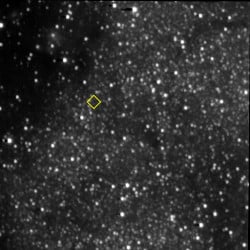
 How time and our spacecraft fly—especially when you’re making history at 32,000 miles per hour!
How time and our spacecraft fly—especially when you’re making history at 32,000 miles per hour!
Continuing on its path through the outer regions of the solar system, NASA’s New Horizons spacecraft has now traveled half the distance from Pluto—its storied first target—to 2014 MU69, the Kuiper Belt object (KBO) it will fly past on Jan. 1, 2019. The spacecraft reached that milestone on April 3, when it was 486.19 million miles beyond Pluto and the same distance from MU69.
“It’s fantastic to have completed half the journey to our next flyby; that flyby will set the record for the most distant world ever explored in the history of civilization,” said Alan Stern, New Horizons principal investigator from the Southwest Research Institute in Boulder, Colorado.
On April 7, New Horizons also reached the halfway point in time between closest approaches to Pluto, which occurred at on July 14, 2015, and MU69, predicted for New Year’s Day 2019. The nearly five-day difference between the halfway markers of distance and time is due to the gravitational tug of the Sun.
Just two hours before the midpoint in time April 7, the spacecraft was put into a hibernation mode. Mission controllers at the Johns Hopkins University Applied Physics Laboratory (APL) in Laurel, Maryland, verified that New Horizons—acting on commands uplinked to its main computer the week before—entered hibernation at 3:32 p.m. EDT. With the spacecraft now about 3.5 billion miles from Earth, the radio signals carrying that word from New Horizons needed just over five hours—traveling at the speed of light—to reach the APL mission operations center through NASA’s Deep Space Network.
Before April 7, New Horizons had been “awake” for almost two and a half years, since Dec. 6, 2014, when the team began final preparations for Pluto approach and encounter operations. The 852 days since the end of its last hibernation period is the longest period that New Horizons has remained in active operations since it was launched in January 2006.
This hibernation period will last 157 days, ending on Sept. 11, but mission activity won’t necessarily stop. The science and mission operations teams will be developing detailed command loads for the MU69 encounter, shaping the science observations for much of nine-day flyby. Their plans currently accommodate two potential flyby altitudes for the encounteer; the team will narrow its choice to the final altitude as it learns more about the properties and orbit of MU69 (which was discovered less than three years ago).
During hibernation mode, much of the New Horizons spacecraft is unpowered. The onboard flight computer monitors system health and broadcasts a weekly beacon-status tone back to Earth, and about once a month sends home data on spacecraft health and safety. Onboard sequences sent in advance by mission controllers will eventually wake New Horizons to check out critical systems, gather new Kuiper Belt science data, and perform course corrections (if necessary).
“The January 2019 MU69 flyby is the next big event for us, but New Horizons is truly a mission to more broadly explore the Kuiper Belt,” said Hal Weaver, New Horizons project scientist from APL, in Laurel, Maryland. “In addition to MU69, we plan to study more than two-dozen other KBOs in the distance and measure the charged particle and dust environment all the way across the Kuiper Belt.”


Be the first to comment